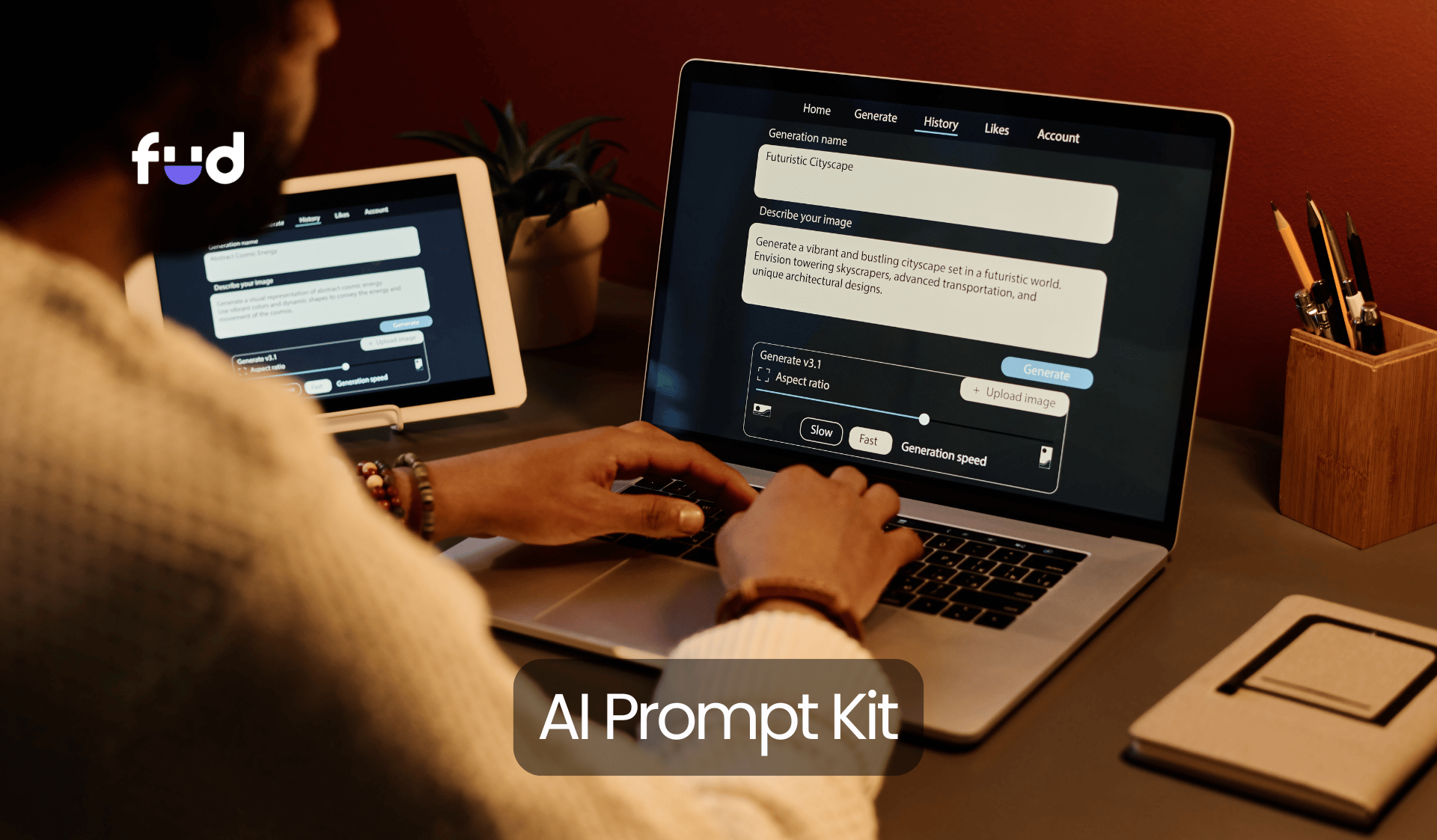- Fud - The World's First Social Hustling Community
- Posts
- Prompt Kit: NotebookLM for Employee Training & Knowledge Transfer
Prompt Kit: NotebookLM for Employee Training & Knowledge Transfer

🌟 Editor's Note
This library exists to help companies turn existing documents into effective, scalable training resources using NotebookLM.
By converting SOPs, training manuals, call scripts, onboarding docs, and internal playbooks into smart study guides, quizzes, flashcards, and scenario-based exercises, teams learn faster, retain more knowledge, and stay aligned — without additional training staff or time drain.
🧰 How to Use
Upload your company training documents into NotebookLM (PDFs, docs, transcripts, manuals).
Open a note and paste one of the “Copy-me Prompts” from this library.
Replace all variables in [brackets] before running the prompt.
Save the outputs into your training portal, LMS, Notion, Confluence, or Google Drive.
Repeat prompts weekly to keep training current, structured, and aligned.
🅰️ Section A — Understanding & Structuring Your Documents
🎯 Objective
Turn dense training material into easy-to-understand study guides.
Prompt A1 — Structured Study Guide Builder
Role: You are a corporate training designer converting documents into structured curriculum.
Use/Objective: Turn training material into a clear, well-organized study guide.
Assumptions:
The trainee may have no prior knowledge.
Content must be skimmable and logically structured.
Inputs: [TRAINING DOCUMENT], [DEPARTMENT], [LEARNING GOAL], [TONE]
Tasks:
Read and summarize the core ideas from [TRAINING DOCUMENT].
Break content into clearly labeled sections and subsections.
Rewrite complex ideas into simple, plain language.
Highlight acronyms, key terms, and definitions.
Guardrails: No removing important compliance or accuracy details.
Output: A study guide formatted as:
Overview
Key Concepts
Definitions
Step-by-Step Processes
Common Mistakes & How to Avoid Them
Prompt A2 — Visual Mind Map Outline
Role: You are an instructional architect simplifying material into visual structure.
Use/Objective: Convert training content into a hierarchical mind map outline.
Inputs: [TRAINING DOCUMENT], [SKILL OR TOPIC]
Tasks:
Identify main topics and subtopics.
Arrange content in a branching structure.
Keep each node to a few clear words.
Guardrails: Do not add new content; only reorganize existing material.
Output: Mind map format in bullet hierarchy.
🅱️ Section B — Flashcards, Quizzes & Memory Reinforcement
🎯 Objective
Create retention-focused learning tools automatically.
Prompt B1 — Flashcard Set Creator
Role: You are a cognitive learning specialist optimizing memory retention.
Use/Objective: Convert key concepts into spaced-repetition flashcards.
Inputs: [TRAINING DOCUMENT], [SKILL OR TOPIC], [TONE]
Tasks:
Identify core facts, steps, and definitions.
Convert each to question → answer form.
Use simple, precise wording.
Guardrails: Avoid trick questions or ambiguity.
Output: 20–40 flashcards formatted as: Q: A:
Prompt B2 — Comprehension Quiz Maker
Role: You are a corporate learning assessment designer.
Use/Objective: Create a comprehension quiz to test understanding.
Inputs: [TRAINING DOCUMENT], [QUIZ LENGTH], [EXPERIENCE LEVEL]
Tasks:
Create a mix of multiple-choice, short-answer, and scenario questions.
Label correct answers with explanations.
Ensure difficulty matches [EXPERIENCE LEVEL].
Guardrails: Do not include trick questions.
Output: Quiz with answer key and rationales.
🅲 Section C — Role-Based Scenario Training
🎯 Objective
Train employees through practical, real-world scenarios.
Prompt C1 — Role-Play Training Scenarios
Role: You are a training facilitator simulating real-world challenges.
Use/Objective: Generate role-specific practice conversations and decisions.
Inputs: [ROLE], [DEPARTMENT], [SKILL OR TOPIC], [LEARNING GOAL]
Tasks:
Create 3 real-world scenarios the learner may encounter.
Provide context, character motivations, and stakes.
Include guidance on ideal responses.
Guardrails: Keep scenarios realistic and workplace-appropriate.
Output: Scenario-based practice exercise set.
Prompt C2 — Call / Meeting Script to Practice
Role: You are a communication performance coach.
Use/Objective: Turn policy/process into a conversational script.
Inputs: [TRAINING DOCUMENT], [ROLE], [TONE]
Tasks:
Convert instructions into natural, spoken dialogue.
Include both good and bad examples.
Label emotional tone indicators.
Guardrails: Maintain professional tone; no slang or sarcasm.
Output: Script with examples and coaching notes.
🅳 Section D — Audit, Refresh & Knowledge Checks
🎯 Objective
Ensure training remains accurate over time and measure retention.
Prompt D1 — Knowledge Gap Diagnostic
Role: You are a training evaluator identifying where learners struggle.
Use/Objective: Identify unclear or confusing parts of the training.
Inputs: [TRAINEE QUESTIONS], [TRAINING DOCUMENT]
Tasks:
Detect repeated confusion points.
Clarify or simplify explanations.
Suggest learning reinforcement prompts.
Guardrails: Feedback must be supportive, not critical.
Output: Knowledge Improvement Recommendation Notes.
🚀 Stay Inspired
Recommended Experts and Mentors
Follow and subscribe to become a member to get the content, community, and mentorship you need:
Step-by-Step Guides
Enroll in these guides to build and master your side hustle. All our guides are created by vetted and proven experts:
Get Started with Graphic Design by LaDale L Whaley
Find the Best Online Business to Start by The eCommerce Mom
29 Side Hustles You Can Start With Less Than $10,000 by Arthur Wang
Recommended Tools
Check out these cool tools that will help you get going today:
FREE Side Hustle E-Book!
Start Your Side Hustle Success Story — Get your FREE E-Book guide now!
Link - https://blog.joinfud.com/c/the-ultimate-side-hustle-guide-for-parentpreneurs-preview

Reply